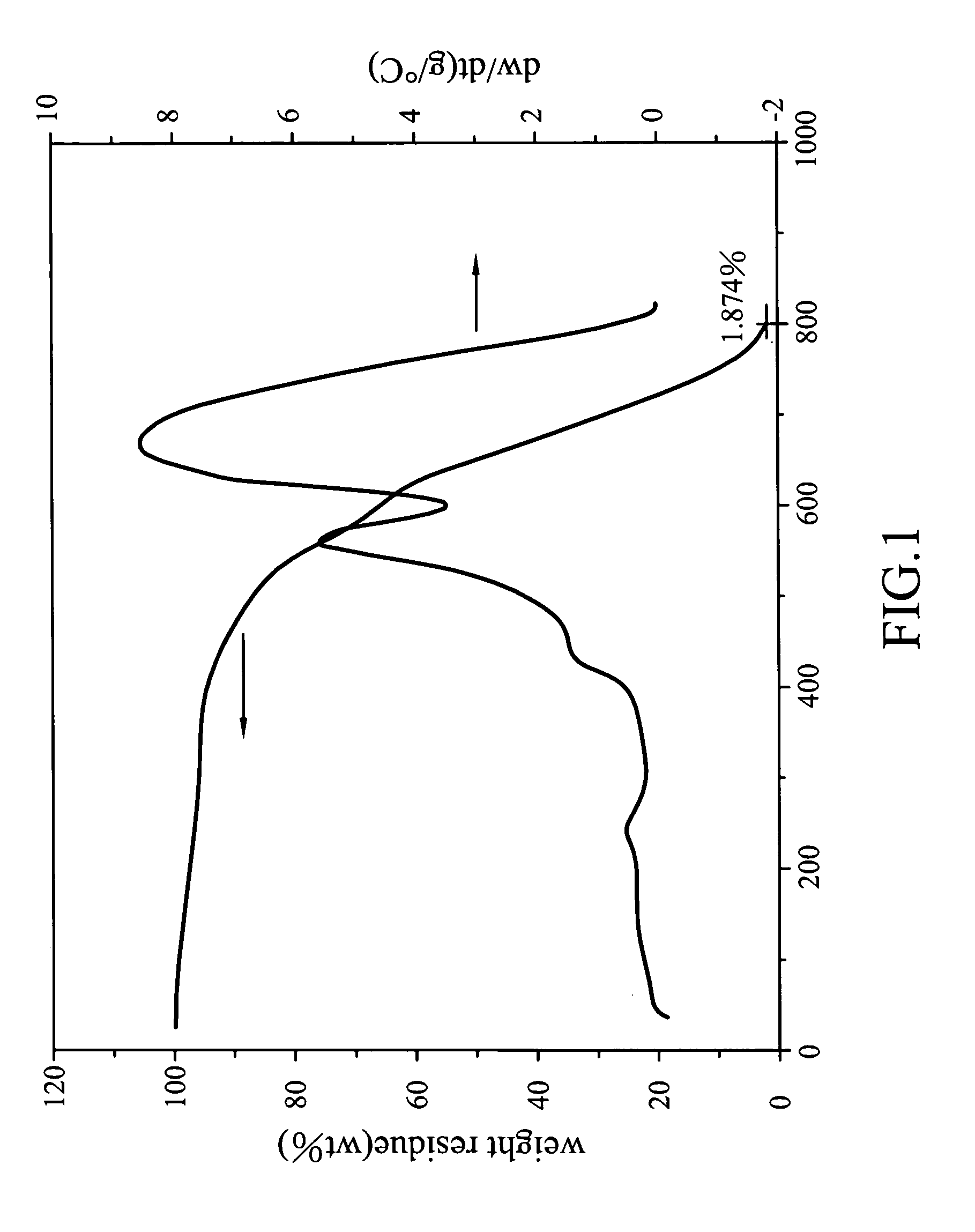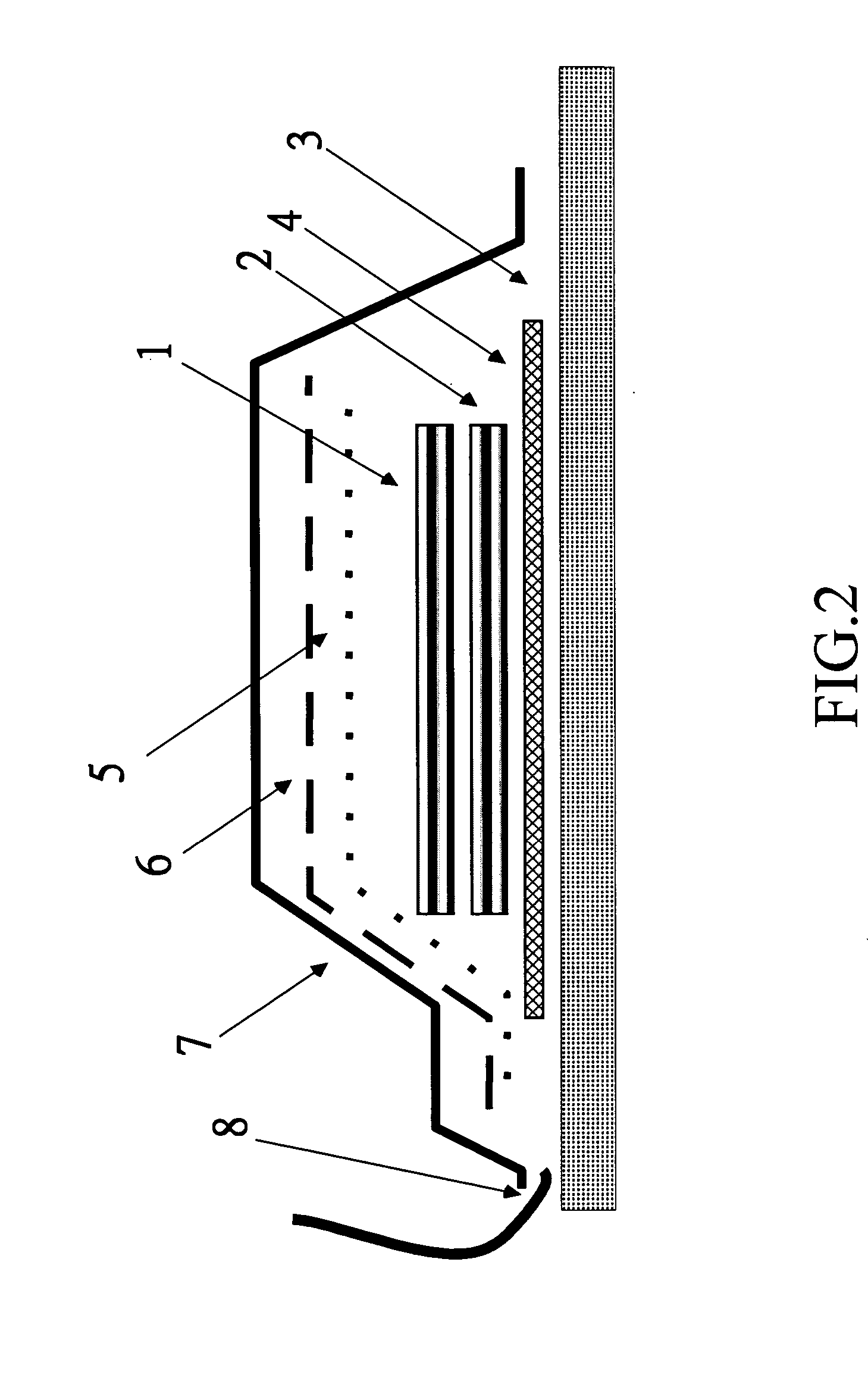Process of maniudacturing dual-layered thermal insulation composite panel
a composite panel and dual-layer technology, applied in the direction of lamination, domestic applications, chemistry apparatus and processes, etc., can solve the problems of inability to molded constructional layers at once, insufficient high temperature mechanical strength, etc., to achieve high thermal insulation capability, high mechanical strength, and high temperature resistance
- Summary
- Abstract
- Description
- Claims
- Application Information
AI Technical Summary
Benefits of technology
Problems solved by technology
Method used
Image
Examples
example 1
[0028] The outer layer includes 2 layers of carbon fiber reinforced phenolic resin composite, and the inner layer includes 10 layers of high-purity silica fiber reinforced phenolic resin composite. The autoclave is used in this example.
[0029] The 2 layers of carbon fiber reinforced phenolic resin prepregs, and the 10 layers of high-purity silica fiber reinforced phenolic resin prepregs are laminated on an aluminum alloy plate of 3 mm thickness that has an Airtech release film thereon already. A porous release film (Airtech A5000) having the same size of the laminate is applied over the laminate. Then, a polyester bleeder (Airweave SS-FR) is applied over the porous release film. The silicone sleeve (GE V240) and the vacuum valve are assembled therewith. The assembly is put into an autoclave. Then, a vacuum hose from the autoclave is connected to the vacuum valve. After the door of the autoclave is closed, vacuuming and heating with pressure are conducted. The assembly is molded in t...
example 2
[0032] The outer layer of 4 layers of carbon fiber (TTII G105) reinforced phenolic resin and the inner layer of 10 layers of high-purity silica fiber fabric with reinforced phenolic resin are laminated in turn on a flat mold. The flat mold has been coated with chromium, polished and applied with a release wax (CIBA Crown Wax) already. The inner layer and the outer layer are molded by three stages. The first stage is conducted by heating for 20 minutes at molding pressure of 2000 psi and temperature of 85° C. At the second stage, the temperature is firstly increased to 150° C. at a rate of 1.3° C. / min, then kept at 150° C. for 4 hours. The last stage is cooling. Thereafter, the panel is removed from the mold and cut into an appropriate size by a machine. The obtained panel has 2 mm-thick PAN-based carbon fiber reinforced phenolic resin composite and the 6 mm-thick high-purity silica fiber phenolic resin composite. The panel is subjected to 2700° C. flame jet of a rocket for 2 seconds...
PUM
| Property | Measurement | Unit |
|---|---|---|
| temperature | aaaaa | aaaaa |
| temperature | aaaaa | aaaaa |
| temperature | aaaaa | aaaaa |
Abstract
Description
Claims
Application Information
 Login to View More
Login to View More - R&D
- Intellectual Property
- Life Sciences
- Materials
- Tech Scout
- Unparalleled Data Quality
- Higher Quality Content
- 60% Fewer Hallucinations
Browse by: Latest US Patents, China's latest patents, Technical Efficacy Thesaurus, Application Domain, Technology Topic, Popular Technical Reports.
© 2025 PatSnap. All rights reserved.Legal|Privacy policy|Modern Slavery Act Transparency Statement|Sitemap|About US| Contact US: help@patsnap.com



